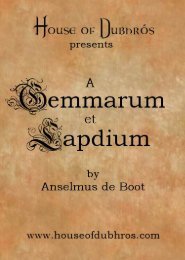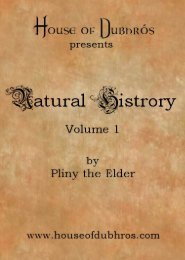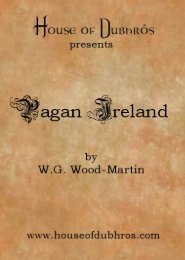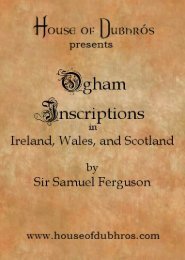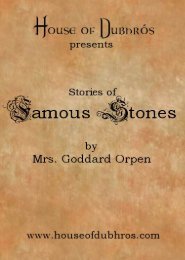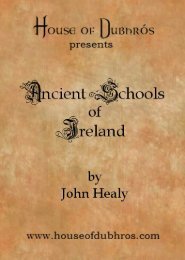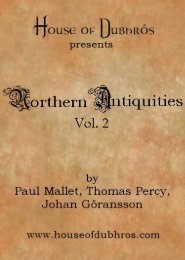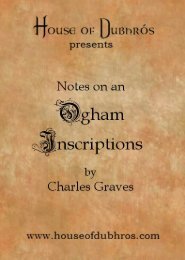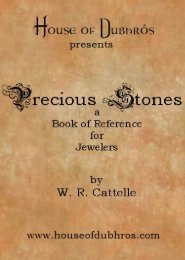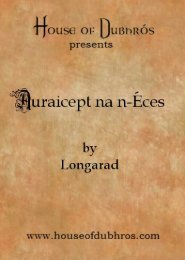You also want an ePaper? Increase the reach of your titles
YUMPU automatically turns print PDFs into web optimized ePapers that Google loves.
the Runic <strong>Poems</strong> 3<br />
To the same period belong a brooch found at Charnay in<br />
Burgundy, and probably also an inscribed spear-head from<br />
Miincheberg (Brandenburg), together with two or three<br />
smaller objects found in the north <strong>of</strong> Germany. In<br />
Germany, however, inscriptions <strong>of</strong> this character are quite<br />
rare and mostly unintelligible, the latest belonging probably<br />
to the eighth century.<br />
There can be no reasonable doubt that the alphabet was<br />
introduced into England by the Saxon invaders in the fifth<br />
century, though the inscriptions dating from the first two<br />
centuries after the invasion are very few and fragmentary.<br />
Among them we may especially note those on a gold coin <strong>of</strong><br />
unknown provenance in imitation <strong>of</strong> a solidus <strong>of</strong> Honorius<br />
and a scabbard-mount from Chessell Down in Wight. These<br />
are connected by the forms <strong>of</strong> the letters with inscribed<br />
objects from Kragehul and Lindholm (Skane), which date in<br />
all probability from the early part <strong>of</strong> the sixth century,<br />
be somewhat later.<br />
though the English inscriptions may<br />
Runic legends also occur on a number <strong>of</strong> silver coins, some <strong>of</strong><br />
them bearing the names jEpil(i)ri&d (doubtless the Mercian<br />
king Aethelred, 675-704), or Pada, identified by some with<br />
Peada, brother <strong>of</strong> Aethelred, by others, and more probably,<br />
with his father Penda (d. 655). <strong>Rune</strong>s are also found on a<br />
number <strong>of</strong> other small objects <strong>of</strong> metal or bone, the most<br />
interesting <strong>of</strong> which is the Franks Casket, generally believed<br />
to date from about 700.<br />
The gradual disuse <strong>of</strong> the Runic alphabet is well illus<br />
trated by coins <strong>of</strong> the eighth and ninth centuries. The<br />
last king whose name appears in Runic characters is Beonna<br />
<strong>of</strong> East Anglia (c. 750), and even on this coin a Roman O<br />
is found. On coins <strong>of</strong> subsequent kings we only meet<br />
with an occasional Runic letter, usually L. In the names<br />
<strong>of</strong> moneyers, however, the Runic letters seem to have<br />
persisted somewhat longer ; for there are a number <strong>of</strong><br />
coins issued by Eanred <strong>of</strong> Northumbria (809-841 ?), on<br />
which two <strong>of</strong> his moneyers signed their names in Runic<br />
characters.<br />
Of memorial stones there are in existence nearly a<br />
12<br />
I



